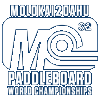The Channel Of Bones : The Ka’iwi (kah-EE-vee) Channel.
Ka’iwi Translated: Hawaiian word for “bone.”
More commonly known today as the Molokai Channel, the Ka’iwi Channel separates the islands of Molokai and Oahu. Stretching 26 miles (42 kilometers) and plunging to a depth of 2,300 feet (701 meters), the Ka’iwi Channel has the reputation as one of the world’s most treacherous bodies of water. The culmination of foul weather and open ocean swells pushing through the narrow canyon that is created by the two land masses of Molokai and Oahu has resulted in the destruction of entire ancient canoe fleets and claimed the lives of modern-day fisherman and watermen.
The tragic loss of Hawaiian big-wave rider and waterman Eddie Aikau in the Ka’iwi Channel during the 1978 Polynesian voyage of the Hokule’a sailing canoe added to the mystique and revered power of the channel. After gale force winds and 30-foot swells disabled the Hokule’a, Aikau left the ship on his rescue paddleboard to seek help for his stranded crewmates. His body and board were never found.
Paddling has been a part of Hawaiian heritage since early Polynesians navigated thousands of miles of open ocean guided by nothing more than currents, wind and stars. Double-hulled sailing canoes were used to cover longer distances and single-hull outrigger canoes covered shorter, inter-island distances.
With the introduction of surfing in the late 18th century, paddleboarding soon became a mode of local ocean transportation.
Today, the Ka’iwi Channel is host to official races for outrigger canoe, surf skis and the Molokai-2-Oahu Paddleboard World Championship. Each human powered race across the Channel of Bones is regarded worldwide as the crowning achievement of the sport.
